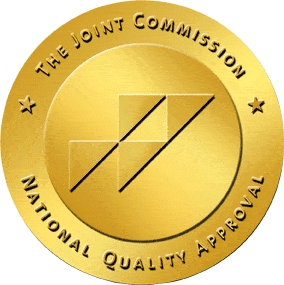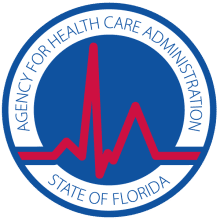Men are more likely than women to drink excessively, and they’re more likely to develop alcoholism as well. Of the 16.3 million American adults who had an alcohol use disorder in 2014, 10.6 million were men, accounting for 9.2 percent of all men in that age group, according to the National Institute on Alcohol Abuse and Alcoholism.1
Why Men Are More Susceptible to Alcoholism Than Women
Men are about twice as likely as women to develop alcoholism, according to a study published in the journal Biological Psychiatry. The research attributes the reason to a larger dopamine release in men when alcohol is consumed.2
Men are about twice as likely as women to develop alcoholism.
In the study, researchers from Columbia and Yale divided participants into two groups. Participants in one group were given an alcoholic beverage, and those in the other group were given a non-alcoholic drink. After consuming the drink, participants underwent a specialized PET scan, which measured the amount of dopamine released as a result of drinking alcohol.
The study found that men who consumed alcohol had a greater dopamine release than the women who consumed it. The area of the brain in which the release occurred was the ventral striatum, which is an area that’s strongly associated with pleasure, the reinforcement of behaviors and the development of addiction.
The increased dopamine levels in men were accompanied by a heightened sense of the positive effects of alcohol, which contribute to the initial reinforcing properties of alcohol. This, in turn, increases the risk of habit formation.
The study also found that with heavy drinking, there’s a decline in this dopamine release, which leads to building a tolerance to alcohol wherein larger doses are needed in order to achieve the desired effects. This increases the risk of developing dependence.
Alcoholism and Men’s Health
The Centers for Disease Control and Prevention points out that men are more likely than women to engage in risky behaviors like driving or having unprotected sex while under the influence. Men have a higher rate of hospitalization and death associated with drinking.3
Male drivers involved in fatal automobile accidents are twice as likely as women to be under the influence. Men are more likely to commit suicide after drinking, and they’re more likely to become physically violent under the influence, increasing the risk of assaulting another person and facing legal consequences.
In terms of physical health, men are at a higher risk than women of developing cancer of the esophagus, liver, mouth, throat and colon as a result of heavy drinking.
Chronic alcohol abuse can interfere with hormone production and testicular function in men, causing problems related to impotence, infertility and a reduction in chest and facial hair. Alcohol is also a common factor in perpetrating sexual assaults, and it increases the chances of engaging in risky sexual behaviors that can lead to sexually transmitted diseases or unplanned pregnancies.
In both men and women, heavy drinking is associated with high blood pressure, heart disease, liver disease, stroke and digestive problems. It can cause learning and memory problems including dementia, and it can lead to the onset of mental illnesses including anxiety and depression.
Abuse, Addiction and Dependence
Alcohol abuse, addiction and dependence are not synonymous, although alcohol abuse can lead to addiction or dependence, or both.
Alcohol Abuse
Abuse is the act of drinking alcohol in a way that causes health, relationship, legal or financial problems. Binge drinking is the most common form of alcohol abuse and is characterized by drinking enough alcohol within the space of two hours to raise your blood alcohol level to .08 percent. For men, this is roughly five drinks, according to the Centers for Disease Control and Prevention, which reports that the prevalence of binge drinking among men is twice that of women.4 Many people who binge drink are considered to be heavy drinkers. For men, heavy drinking is defined as consuming 15 or more drinks per week.
Addiction
Chronic alcohol abuse can transition to addiction, which is characterized as the inability to stop drinking despite wanting or trying to and despite negative consequences it causes in terms of relationships, finances, legal status or physical or mental health.
From the first drink, the brain associates alcohol with feelings of pleasure, and each time alcohol is used, the connection between drinking and the pleasant feelings it produces becomes stronger. Changes in brain function and structure can cause intense cravings for alcohol, leading an individual to seek out and drink alcohol even if doing so causes negative consequences.
While choice is a factor in the initial decision to drink, once an addiction sets in, it’s no longer about choice. Rather, it’s a compulsion caused by the changing function of brain chemicals. The National Institute on Drug Abuse stresses that willpower and good intentions are rarely sufficient for overcoming an addiction to alcohol.5 In most cases, professional help is required to break the cycle of remission and relapse for long-term recovery, because addiction nearly always has underlying factors like unresolved trauma, high levels of stress, mental illness or a dysfunctional family system that must be addressed.
While choice is a factor in the initial decision to drink, once an addiction sets in, it’s no longer about choice.
Dependence
Dependence is characterized by changes in brain function that lead to needing alcohol in your system in order for your brain to function properly.
The National Institute on Alcohol Abuse and Alcoholism explains that alcohol abuse affects the production and activity of neurotransmitters, or brain chemicals.6 Initially, drinking alcohol enhances the effects of GABA, a neurotransmitter responsible for feelings of well-being and relaxation. At the same time, it suppresses the activity of glutamate, which is a neurotransmitter responsible for feelings of excitability.
When alcohol abuse becomes chronic, the brain attempts to maintain normal chemical function by suppressing GABA (relaxation) activity and increasing glutamate (excitability) activity. Because the brain is continually changing the way it functions in order to compensate for the presence of alcohol, increasingly higher doses of alcohol are needed to get the same effects. This is known as building a tolerance, and it’s an indication of an increased risk of developing a dependence on alcohol.
Over time, chronic abuse can lead to a shift in brain function wherein the brain operates more “normally” when alcohol is present than when it’s not. At this point, if alcohol is withheld from the body, brain chemical function rebounds and causes withdrawal symptoms. This is the major indication that a dependence has developed.
Defining and Diagnosing Alcohol Use Disorders
The Diagnostic and Statistical Manual of Mental Disorders, or DSM, is produced by the American Psychiatric Association and used nationwide to diagnose mental health problems. In the past, alcohol abuse, addiction and dependence were separate diagnoses. However, with the latest edition, these are all grouped together under the diagnosis “alcohol use disorder,” or AUD.7 Eleven criteria are used to diagnose an AUD. If two to three symptoms apply, the AUD is classified as “mild.” Four to five symptoms denote a “moderate” classification and six or more symptoms indicate a severe AUD.
The diagnostic criteria for an AUD are based on past-year use and are as follows:
In the past year, have you:
Had times where you ended up drinking more or for a longer period of time than you intended?
Wanted to stop or cut down on drinking but found yourself unable to?
Spent a lot of time drinking or recovering from drinking?
Wanted a drink so badly it was all you could think about?
Found that drinking or recovering from it interfered with taking care of your home or family or caused problems at work or school?
Abandoned or cut back on hobbies you once enjoyed in order to drink?
Gotten into more than one situation while under the influence that put your safety at risk, such as having unprotected sex, walking in a dangerous area or driving under the influence?
Continued to drink despite feeling depressed, anxious, or experiencing a related health problem?
Had to drink more than you used to in order to get the desired effects? Or, have you found that your usual number of drinks were much less effective than before?
Experienced withdrawal symptoms when the effects of alcohol were wearing off, such as insomnia, restlessness, nausea, racing heartbeat, hallucinations or a seizure?
Professional treatment is particularly essential for a moderate or severe AUD. Without professional help, most people with alcoholism oscillate between recovery and relapse. Treatment helps promote long-term successful recovery.
Professional treatment is particularly essential for a moderate or severe AUD.
Treating an Alcohol Use Disorder
According to the Substance Abuse and Mental Health Services Administration, recovering from addiction is a highly individual endeavor.8 No single pathway to treatment is right for every individual, and to that end, a high-quality treatment program will offer an individualized recovery plan based on your goals, preferences, culture and other factors.
A holistic approach to treatment is essential and will include traditional therapies, such as motivational enhancement therapy and cognitive-behavioral therapy, and complementary therapies like yoga, meditation, acupuncture or biofeedback. This holistic approach ensures that treatment addresses a variety of issues of body, mind and spirit.
The Substance Abuse and Mental Health Services Administration has identified four major dimensions that support a life in recovery:
Health: Managing any physical or mental health problems, abstaining from substance abuse and making healthy, informed choices that support a high level of physical and emotional well-being.
Home: Having a safe and stable place to live.
Purpose: Engaging in meaningful activities each day, such as working, attending school, caring for the family or pursuing creative endeavors and having the income, independence and resources to participate in the community.
Community: Having healthy, meaningful relationships and a social network that offers support, love, friendship and hope.
A high-quality program will address a range of needs and issues by either providing essential services or connecting an individual to the right agencies for help. Some common needs of people in treatment include:
Legal counsel
Medical attention
Mental health care
Educational needs
Vocational needs
Safe housing
Because recovery is a highly personal endeavor, an endless number of pathways may be taken to achieve it. These may include any combination of the following:
Clinical treatment
Faith-based approaches
Medication
Family and peer support
High level of self-care
A variety of treatment therapies
Treatment can take place in a number of contexts. A wide range of recovery programs appeal to and address the unique needs of a variety of demographic groups. Programs may cater to LGBT populations, women only, men only, a specific religious affiliation (including atheism) or a certain age group. Regardless of the type of program an individual chooses, high-quality treatment will respect the beliefs, practices and cultural or linguistic needs of a diverse range of people and groups.
Inpatient vs. Outpatient Treatment
Many high-quality treatment programs offer both inpatient and outpatient programs.
Inpatient treatment is essential for those with a long history of addiction or one that’s severe in nature. Inpatient treatment allows an individual to focus solely on recovery without the distractions, stresses and triggers encountered in the larger community. Highly structured and very intensive, inpatient treatment enables people in recovery to develop healthy relationships, work intensively through a variety of issues and enjoy a high level of care and support.
Inpatient treatment allows an individual to focus solely on recovery without the distractions, stresses and triggers encountered in the larger community.
Outpatient treatment can be highly successful as well, as long as the client is motivated to recover and has a strong support system at home and in the community. Outpatient treatment enables individuals to continue working or attending school while in treatment, and it offers the opportunity to put the skills learned to use right away in the real world. It also offers a high level of privacy.
Most inpatient and outpatient programs last for ninety days. Anything less, according to the National Institute on Drug Abuse, is of limited effectiveness.9
Three Steps to Treatment
A quality treatment program consists of three stages: Detox, treatment and aftercare.
Detox
Detox is the process of allowing all traces of the substance of abuse to leave the body so that brain function can begin to return to normal. Many programs offer medical detox, which is medically supervised and usually involves administering medications to treat the often-excruciating symptoms of withdrawal, including intense cravings. Medical detox is particularly important for alcohol withdrawal, since some of the symptoms can be dangerous or, in some rare cases, fatal.
A high level of physical and emotional support from a caring staff makes the detox process far more comfortable than going it alone. Many high-quality programs offer alternative and complementary therapies to assist in detox, including yoga classes, aqua therapy or acupuncture to reduce the severity of symptoms and enhance emotional well-being.
Detox only addresses the physical aspect of dependence. Once the detox process is complete, treatment for the addiction begins.
Treatment
Because addiction is far more complex than dependence, a wide range of therapies is used to help clients delve into the issues that underlie the addiction. Through individual and group therapy sessions, clients identify their own motivation for wanting to recover. They identify harmful attitudes, false beliefs, problematic patterns of thinking and self-destructive behaviors and work to replace these with healthier ways of thinking and behaving.
An educational component of treatment helps clients and their families understand the mechanics of addiction and relapse. Understanding how addiction affects brain function and behavior, and knowing the stages of relapse and their signs, is important for successful long-term recovery.
Through relapse prevention programming, clients assemble an arsenal of skills, strategies and techniques to address triggers like stress, cravings and high-risk situations.
Family therapy helps to address dysfunction in the household, which is a major trigger for relapse. Through family therapy sessions, clients and their loved ones learn effective communication and listening skills and address a variety of issues to restore function and help repair broken trust and damaged relationships. Family therapy or individual therapy is particularly important for the children of someone with alcoholism, since they are at a much higher risk of developing behavioral and substance abuse problems down the road.
Aftercare
Once treatment is complete, a highly individualized aftercare plan is developed and set in place to help support the early months of recovery. The aftercare plan draws on the motivation and momentum gained in treatment and includes a number of components based on need.
A typical aftercare plan will include ongoing individual, group and family therapy and participation in a community-based peer support program like Alcoholics Anonymous or Smart Recovery. Other components, which will be added as needed, may include time spent in a sober living facility, vocational training, and the ongoing evaluation of any mental health or medical problems. A case manager will periodically evaluate the aftercare plan and assess for any changing or emerging needs and amend the plan as necessary to ensure it continues to effectively support successful recovery.
Recovery is Achievable
Hope is the foundation of recovery, according to the Substance Abuse and Mental Health Services Administration.8 Hope is the belief that a better future is possible and that the challenges of recovery can be met and overcome.
Unfortunately, only 9.8 percent of men who need treatment seek it, for a variety of reasons. Some of the most common are financial considerations, fear of what others might think, an inability to enter an inpatient program due to work or school commitments and the fear of living without alcohol. Over 62,000 men die from alcohol-related causes each year, and for many, treatment is the only hope for recovery.
If you or someone you love suffers from an alcohol use disorder, a high-quality treatment program can help make the journey to long-term sobriety easier, more fulfilling and more successful. This isn’t to say that recovery isn’t hard work, and it’s not to say that choosing to enter treatment is an easy decision. But treatment will promote improvements in self-esteem, a renewed purpose in life, better physical and mental health and a higher sense of emotional well-being to vastly increase your quality of life and promote a far brighter future.
Sources:
Alcohol Facts and Statistics. (2016, June). Retrieved from http://pubs.niaaa.nih.gov/publications/AlcoholFacts&Stats/AlcoholFacts&Stats.pdf
Urban, N. B. L., et. al. (2010, October 15). Sex Differences in Striatal Dopamine Release in Young Adults After Oral Alcohol Challenge: A Positron Emission Tomography Imaging Study With Raclopride. Biological Psychiatry, 68(8), 689-696. Retrieved from http://www.biologicalpsychiatryjournal.com/article/S0006-3223(10)00594-9/fulltext
Fact Sheets – Excessive Alcohol Use and Risks to Men’s Health. (2016, March 7). Retrieved from http://www.cdc.gov/alcohol/fact-sheets/mens-health.htm
Fact Sheets – Alcohol Use and Your Health. (2016, July 25). Retrieved from http://www.cdc.gov/alcohol/fact-sheets/alcohol-use.htm
DrugFacts: Understanding Drug Abuse and Addiction. (2012, November). Retrieved from https://www.drugabuse.gov/publications/drugfacts/understanding-drug-abuse-addiction
Neuroscience: Pathways to Alcohol Dependence. (2009, April). Retrieved from http://pubs.niaaa.nih.gov/publications/AA77/AA77.pdf
Alcohol Use Disorder: A Comparison Between DSM-IV and DSM-5. (2016, July). Retrieved from http://pubs.niaaa.nih.gov/publications/dsmfactsheet/dsmfact.pdf
Recovery and Recovery Support. (2015, October 5). Retrieved from http://www.samhsa.gov/recovery
Principles of Drug Addiction Treatment: A Research-Based Guide (Third Edition). (2012, December). How Long Does Treatment Usually Last? Retrieved from https://www.drugabuse.gov/publications/principles-drug-addiction-treatment-research-based-guide-third-edition/frequently-asked-questions/how-long-does-drug-addiction-treatment



